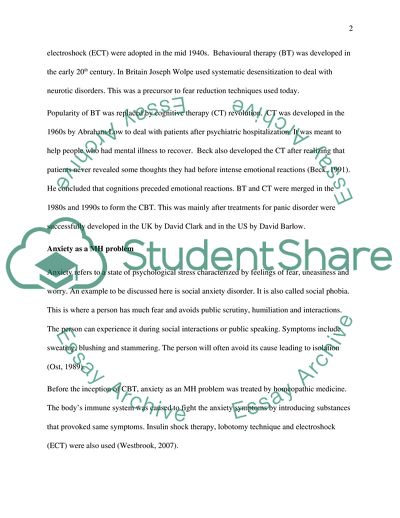Cite this document
(Cognitive Behaviour Therapy Case Study Example | Topics and Well Written Essays - 1500 words, n.d.)
Cognitive Behaviour Therapy Case Study Example | Topics and Well Written Essays - 1500 words. https://studentshare.org/health-sciences-medicine/1748295-development-of-cognitive-behaviour-therapy-cbt-and-its-role-in-the-practice-of-mental-health-mh-nursing
Cognitive Behaviour Therapy Case Study Example | Topics and Well Written Essays - 1500 words. https://studentshare.org/health-sciences-medicine/1748295-development-of-cognitive-behaviour-therapy-cbt-and-its-role-in-the-practice-of-mental-health-mh-nursing
(Cognitive Behaviour Therapy Case Study Example | Topics and Well Written Essays - 1500 Words)
Cognitive Behaviour Therapy Case Study Example | Topics and Well Written Essays - 1500 Words. https://studentshare.org/health-sciences-medicine/1748295-development-of-cognitive-behaviour-therapy-cbt-and-its-role-in-the-practice-of-mental-health-mh-nursing.
Cognitive Behaviour Therapy Case Study Example | Topics and Well Written Essays - 1500 Words. https://studentshare.org/health-sciences-medicine/1748295-development-of-cognitive-behaviour-therapy-cbt-and-its-role-in-the-practice-of-mental-health-mh-nursing.
“Cognitive Behaviour Therapy Case Study Example | Topics and Well Written Essays - 1500 Words”. https://studentshare.org/health-sciences-medicine/1748295-development-of-cognitive-behaviour-therapy-cbt-and-its-role-in-the-practice-of-mental-health-mh-nursing.


